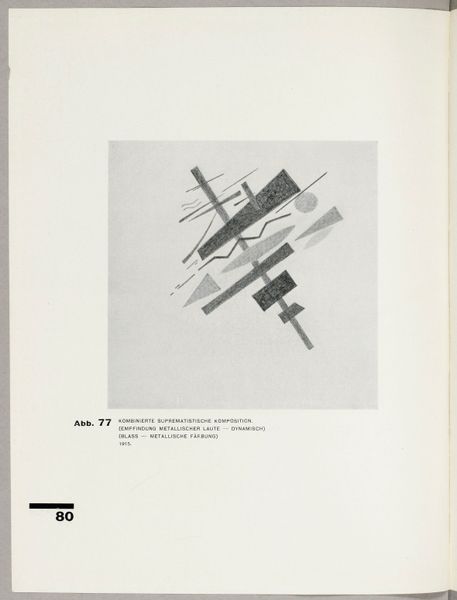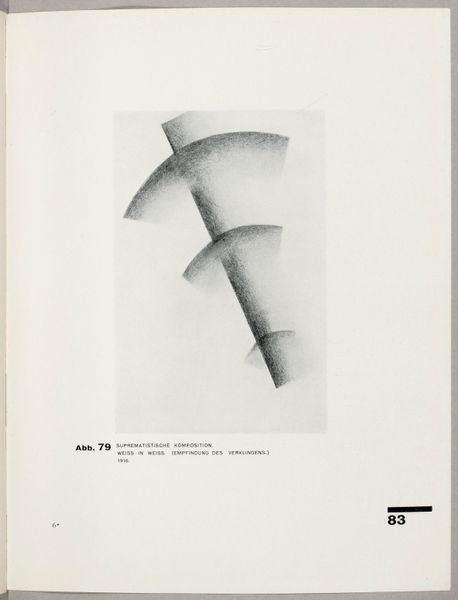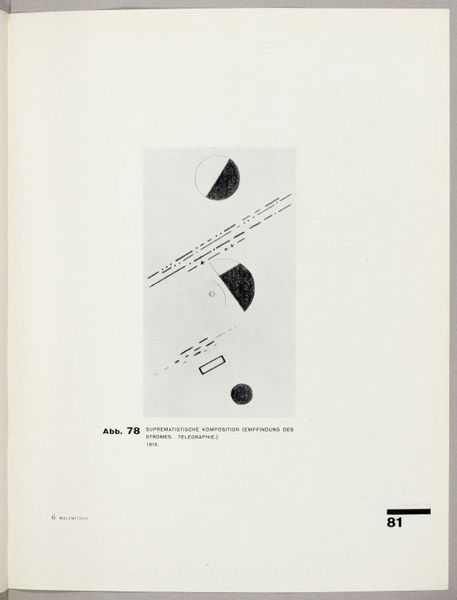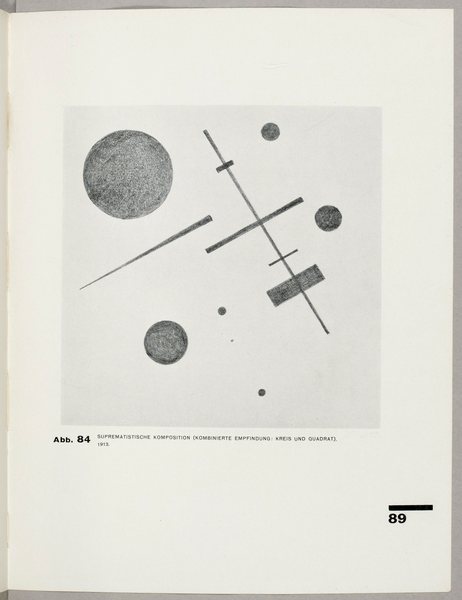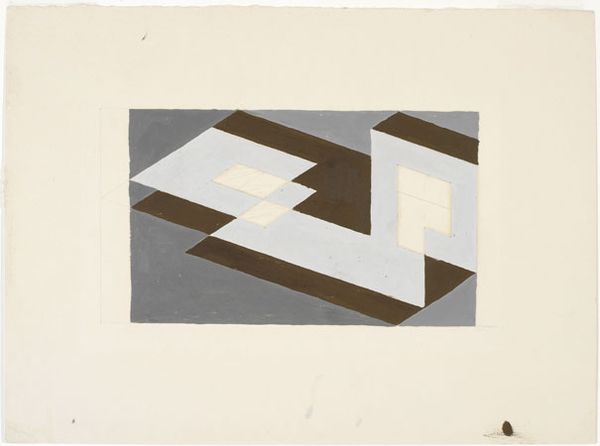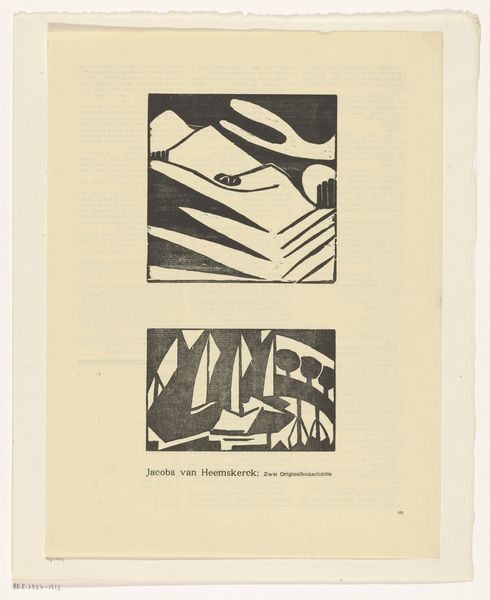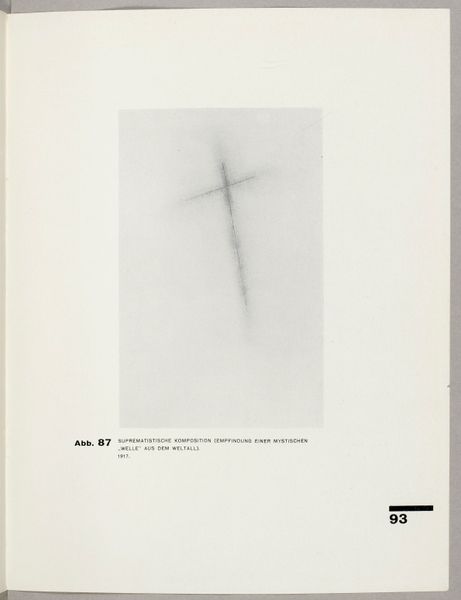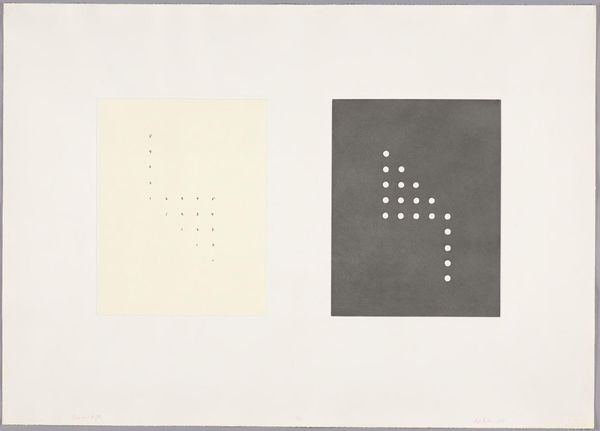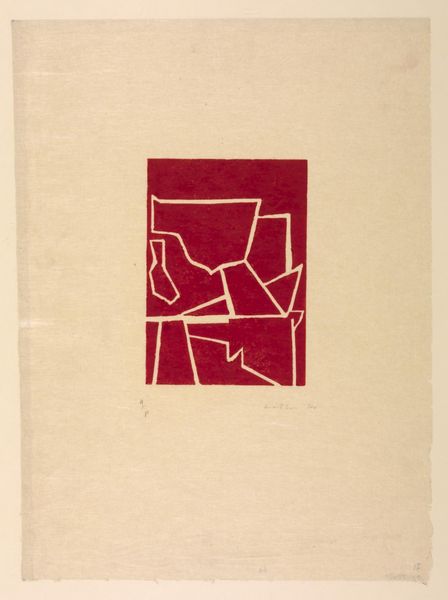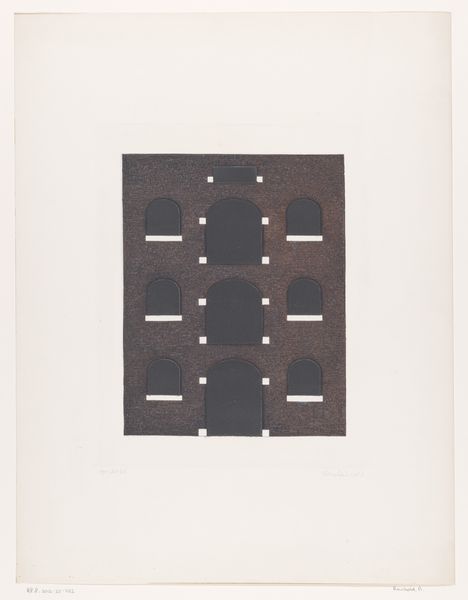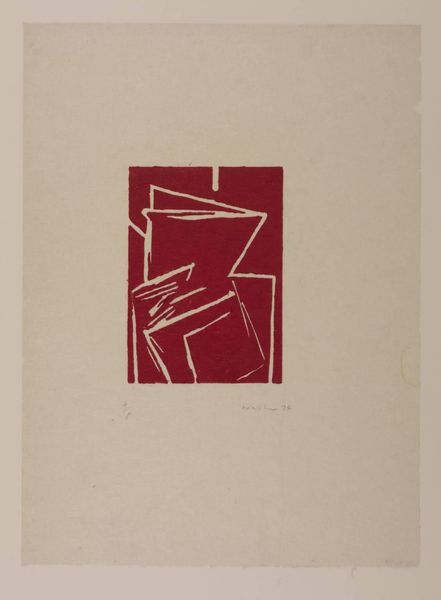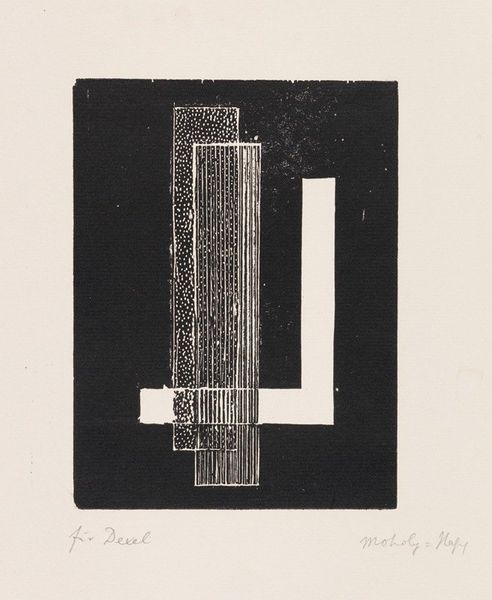
drawing, graphite
#
drawing
#
geometric
#
geometric-abstraction
#
abstraction
#
graphite
#
suprematism
Copyright: Public domain
Curator: Let’s turn our attention to this compelling graphite drawing by Kazimir Malevich, entitled "Composition suprematistic elements (Feeling of the flight)", from 1927. What strikes you initially about this piece? Editor: Well, the textural quality immediately grabs me. The subtle gradations achieved with the graphite seem essential—you can see where he's built it up in layers to emphasize areas of flatness in geometric shapes. Curator: Precisely! The deployment of elementary shapes--the rectangles and lines-- demonstrates a commitment to suprematist ideals of pure artistic expression liberated from objective representation. Editor: But, of course, what's vital is how he used graphite to render a kind of surface that feels like movement itself, the ‘flight’ that is evoked in the name – a very subtle achievement, which makes this so different than any suprematist oil on canvas from only a decade earlier. How do you view the composition contributing to its suprematist intentions? Curator: The placement of these shapes within the white space of the paper is calculated. Notice the dynamic angles of each geometric form, the orientation of the largest rectangle is off-kilter – creating a sense of tension and defying gravitational pull and the subtle shadows indicating how this spatial relationship implies a radical shift from representational conventions. It challenges the viewer to enter a realm of pure sensation. Editor: And yet, I keep coming back to Malevich’s process here: consider the physical act of layering graphite onto the page, that intimate hand-to-paper transaction. There is labor visible in this object; time etched into the surface. Its radical non-objectivity coexists alongside evidence of manufacture. Curator: It's certainly not a cold abstraction! It’s amazing how these minimal components carry such power and visual impact. Editor: Yes, there's an intense physicality revealed through those material choices, one which invites engagement rather than simply a cerebral decoding. Curator: An apt reminder of how materiality anchors even the most ethereal aesthetic aspirations! Editor: Indeed, this reveals how artistic intention can translate the physical qualities of a work of art into a conduit for transcendent ideas.
Comments
No comments
Be the first to comment and join the conversation on the ultimate creative platform.

